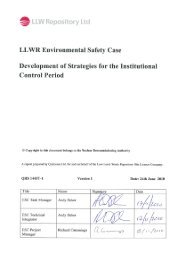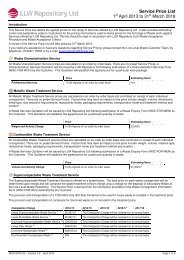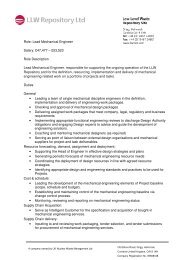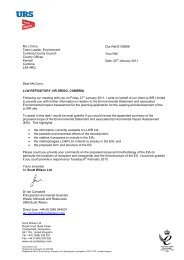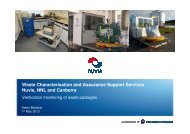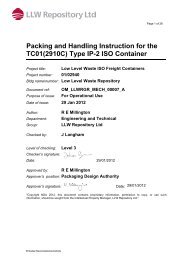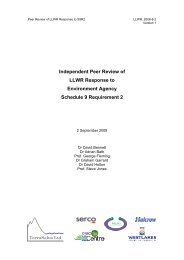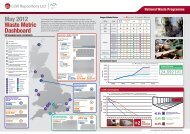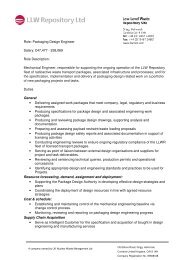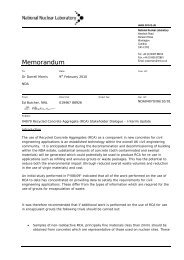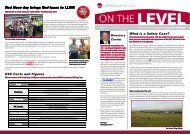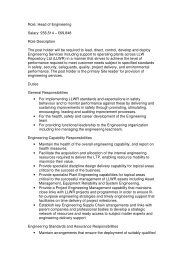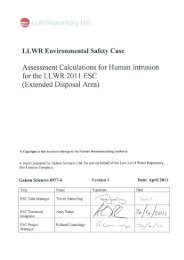Halcrow, Coastal Studies Forward Programme Data Compilation ...
Halcrow, Coastal Studies Forward Programme Data Compilation ...
Halcrow, Coastal Studies Forward Programme Data Compilation ...
Create successful ePaper yourself
Turn your PDF publications into a flip-book with our unique Google optimized e-Paper software.
4.2 Conceptual coastal change projection models and results4.2.1 Open coast(a) Stationary sea-level modelA simple linear extrapolation model has been used to estimate future cliff recessionrates under stationary sea-level conditions based on BIOCLIM scenario A4a(Thorne, 2007). Average annual recession rates for selected cliff sections have beenprojected into the future to the point at which breaching of the site boundaryoccurs (i.e. the cliff line retreats to a point where it intersects the site’s boundaryfence). The results are shown in Table 4.2 and suggest that breach of the LLWRsite due to coastal erosion under static sea-level can be expected within 1,400 years.Based on current understanding of climate change and sea-level rise, a scenario ofstatic sea-level is considered unlikely, and consequently these projections can beviewed as a best case.Table 4.2 BIOCLIM sea-level scenario A4a (Stationary sea-level)Unit Profiles RecessionRate*(m/Year)1000 YearRecessionDistance (m)Termination Eventat LLWR1. Barn Scar 30-35 0.07 70 5000 Years2. Carl Crag 36-47 0.25 250 1400 YearsNote: * Average long-term cliff recession rate from map sources(b) Rising relative sea-level modelA simple quantitative model was presented in <strong>Halcrow</strong> (2006b), which accountsfor more likely projections of sea-level. The model incorporates a negativefeedback whereby accelerated cliff recession causes increased sediment supplywhich in turn leads to beach growth to provide cliff protection leading to areduced cliff recession rate.The model uses relative sea-level (RSL) change and Beach Level (BL) factors tomodify an initial average recession rate (R) at a cliff-beach profile (i.e. it is a 2-dimension model):R (Year T) = R (Year T-1) x RSL Factor x BL FactorThe cumulative recession over time is calculated as:Cumulative R (Year T) = R (Year T) + Cumulative R (Year T-1)Doc No 1 Rev 2: Date: May 2010 34



